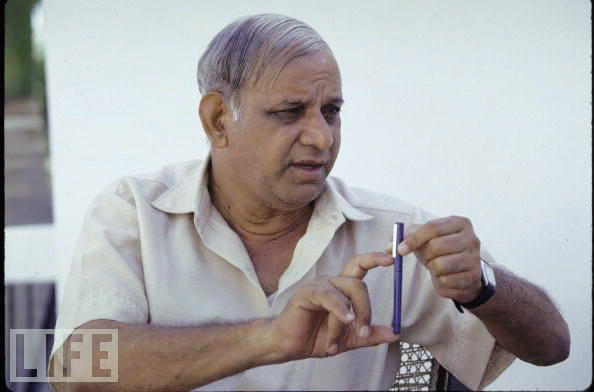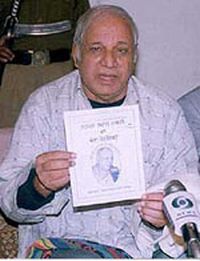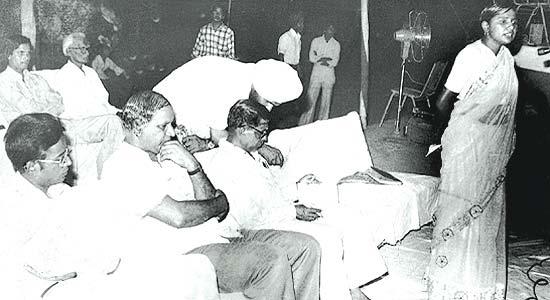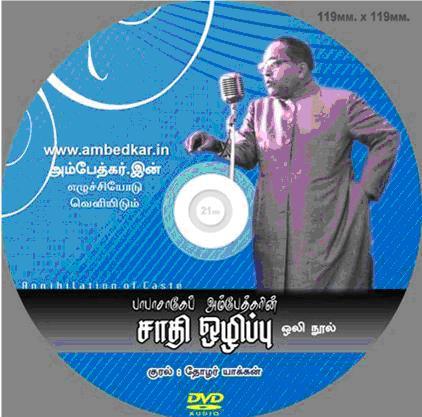Kancha Ilaiah
[This article was first published in two parts, ‘A paradigm shift called Kanshi Ram’ and ‘Dalits and the horizontal ladder’, in 2003; we have combined the two parts into one single piece of writing. We, along with our readers, celebrate the memory of Manyawar Kanshi Ram on his birth anniversary- Round Table India]

Kanshi Ram suffered a brain stroke on September 15 when he was travelling from Rajahmundry to Hyderabad. Since then he has remained immobile. For a few days he lost his speech but gradually regained his speech. Now both for the reasons of stroke and also for reasons of advanced age he may remain inactive in politics in his future life. In anticipation of that situation Mayavati took over as the president of the Bahuajan Samaj Party (BSP). That is an indication that he may not play an active role in Indian political sphere in the future.
It is time to assess the role of Kanshi Ram in Indian politics and civil society. After Ambedkar he became a Messaiah of Dalits. He is not a scholar-politician like Ambedkar but a far greater political communicator than him. Within a short period of twenty years the impact that Kanshi Ram made on the Indian political system is remarkable. He started his life as an ordinary employee in an ordnance factory in Pune, then moved on to organise the Dalit employees. He left his job initially for that purpose. While organising the Dalit employees he settled in Uttar Pradesh to organise the Dalit labouring masses in the early 80s. There he came to an assessment that the Dalits had acquired the political consciousness to form themselves into an electoral bloc.
Bloc formation
During the early phase of Indira Gandhi’s rule, the Dalits were organised into an electoral bloc within the fold of the Congress. To put it in Gramscian terms, that bloc formation was done by the Congress for its votes and it was not for Dalits themselves. For transformation of their historical untouchable-semi slave mode of consciousness that kind of bloc formation was a necessary condition.
The Dalits in North India at that time needed some land or other economic asset base, as by then they were by and large agrarian labour. In certain pockets the 1971 land reform agenda gave them that initial cushioning. For a historically oppressed community to stand up on its own even at the election booth a basic economic asset was necessary.
By the time Kanshi Ram formed his BSP with conceptual clarity of combining the OBC vote and the Dalit vote, the OBCs had acquired some land base. But the Dalits were far behind the OBCs in land ownership, though the OBCs were visibly backward in education than the SCs. Kanshi Ram was the first politician who evolved a language to fuse the Dalits and the OBCs into one electoral bloc.
Bahujan concept
To achieve that objective, he moved away from the concept of Dalit and formulated his own concept of ‘Bahujan’. Though it was a Buddhist concept reformulated by Phule, Kanshi translated into an electoral language. This was to rhetorically project the Dalits not as minority but as part of a majority. In Ambedkarite discourse, Dalits were always conceived as unfusable minority. That was because of the socially embedded untouchability that was being practised by the OBCs as well. Because of the social democratic campaign in the system after Independence, visible cracks began to appear in the cemented psyche of touchable community.
The time was ripe enough to fuse the OBCs and SCs. Kanshi Ram realised this on going process. He formulated the theory of numbers based on the citizenship rights of Dalits and OBCs.
He constructed caste as an ideological category. To show it as historically viable category, he started projecting the images of Mahatma Phule, Sahu Maharaj and Periyar along with Ambedkar. Till then these historical figures were not introduced to the North Indian conservative civil and political society. And also Ambedkar was never so systematically clubbed with other historical OBC ideologues. He worked out a psychological strategy to position the SCs and OBCs in the war for electoral positions as a tactically fused force. This psychological positioning was very important and a necessary condition for moving on to the other stage of electoral victory and running of the state apparatus on their own.
Though Ambedkar formed the Republican Party of India his historical construction of Dalit minority view had not allowed that party to position itself in the winning race. At best that remained a pressure group.
Kanshi Ram transformed that minority view into a majority view. This psychological therapy worked more on Dalits than on OBCs. In the UP context, Kanshi Ram could drive at least all the Dalits to the election booths with a determination to vote for the BSP and that itself was no mean achievement.
Dalits and the horizontal ladder
In the 1984 elections, Kanshi Ram played the game of defeating the otherwise winnable Congress candidates in UP. In the name of Bahujan rhetoric he organised Dalits into an electorally confident group. Slowly in many constituencies, apart from Dalits, he saw to it that either a section of OBCs or Muslims align with the BSP. That began to give the BSP winning positions in some constituencies. His whole theoretical explanations used to centre on formation of the Bahujan Samaj. As many think he would not hover around just winning the elections. He repeatedly said that before going towards abolition of caste — an agenda that Ambedkar worked out — the caste ladder, which remains vertical, must be made to lie down horizontally. Only then immutable caste blocks of the ladder become mutable. Though Kanshi Ram used to consider the political power as the master key, the process of acquiring that political power has to combine with the social empowerment of the Bahujans.
Social samaj
He repeatedly said that the Bahujan Samaj is not just a political samaj. It is also a social samaj. Unlike many social reformers who preceded him he chose political mobilisation as an agent of social mobilisation as well. He used slightly trickish formula that political reform also leads to social reform. He seems to have realised that the emerging elite among the SCs, the STs and the OBCs was becoming more power conscious as they were getting acquainted with the numbers game and power politics.
The SC bureaucrats who had gained experience of handling the state institutions rallied round him quite covertly. This was greatest advantage of Kanshi Ram and greatest disadvantage of OBC politicians who started emerging during the same period. Secondly, unlike Mulayam Singh Yadav and Laloo Prasad Yadav, Kanshi Ram combined electoral agenda with that of social reform agenda with a theoretical perspective of his own under the rubric of the formation of the Bahujan Samaj.
Quite tactically he used to keep his religious discourse in low key. By and large he remained indifferent to the communalism discourse because as an Ambedkarite he had no belief in separating Hinduism as religion and Hindutva as communal ideology. Unlike Ambedkar, he focussed his discourse around political realm. ‘Vote hamara, raj tumhara: nahi chalega’ was his central slogan. That made the objectified Dalit voters to turn their objectified political position into subjective citizenship assertion.
Political liberative agenda
Before Kanshi Ram’s independent assertion in the electoral politics several Dalit leaders like Jagjivan Ram, Ram Vilas Paswan and so on became ministers and a person like Jagjivan Ram established himself as able administrator. But they never established their own electoral constituency. Whether it was Jagjivan Ram or Paswan or any other Dalit politician, they did not work out a political liberative agenda for Dalits. Kanshi Ram did that. Several Dalit leaders began to emerge as autonomous leaders after Kanshi Ram came to the scene. Even the OBC leaders like Laloo Prasad Yadav and Mulayam Singh Yadav owe a lot to his strategy. As a strategist, he was not willing to occupy any power position except that of Prime Ministership. He told in private that small positions like Chief Ministership would sap his energies and one who rules as Prime Minister can lay a trap for any Chief Minister. That could have been the reason why he did not think of becoming the Chief Minister of UP and handed it over to a very young Mayawati. There was a rumour that the BJP sent feelers whether he was interested in becoming the President of the nation. It is said that he turned it down. Whether it is true or not, he goes down in Indian history as a man who awakened the poorest of the poor. He never bothered what the Indian press wrote about him or did not write about him. The Indian press always remained unfair to him. But that did not bother him a bit. As a bachelor and a man in ordinary bush shirt and trousers, he made all the difference in present day Indian politics. He made the Bahujans (not just SCs but SCs, STs and OBCs) a collective social and political force that need not look back. Whether some people agree or not in my view, after Buddha, Phule, Periyar and Ambedkar he will be the tallest socio-political reformer of India. Let us hope that he would have a long life.
[Courtesy: Deccan Herald of November 6, 2003, and November 7, 2003]










